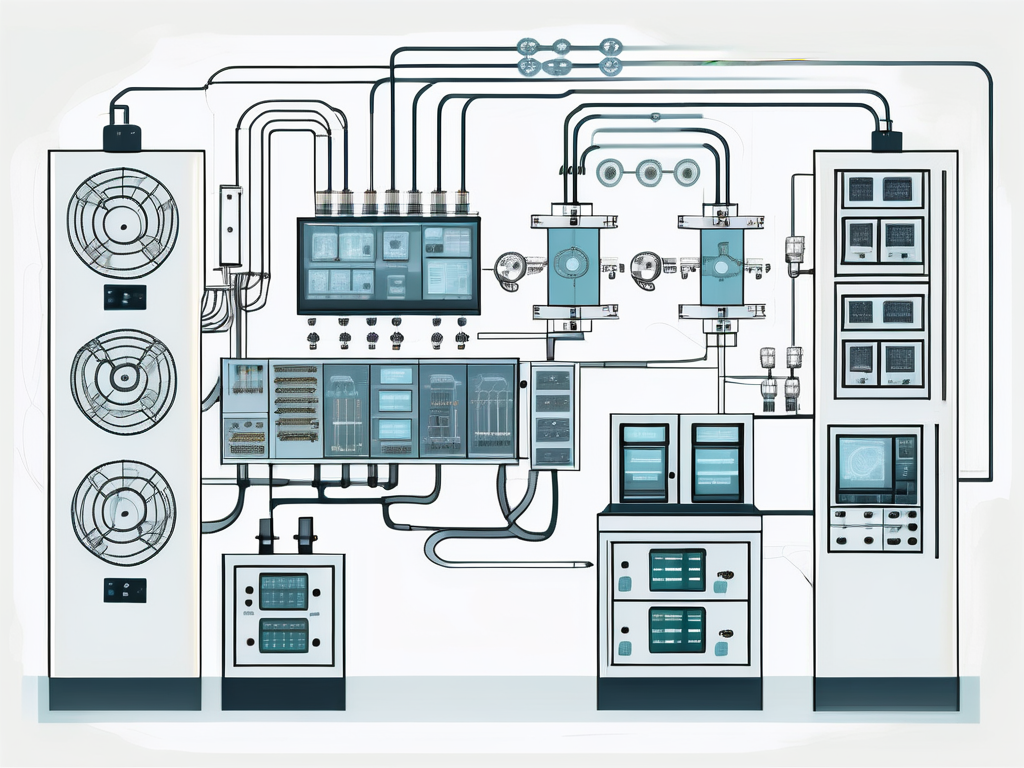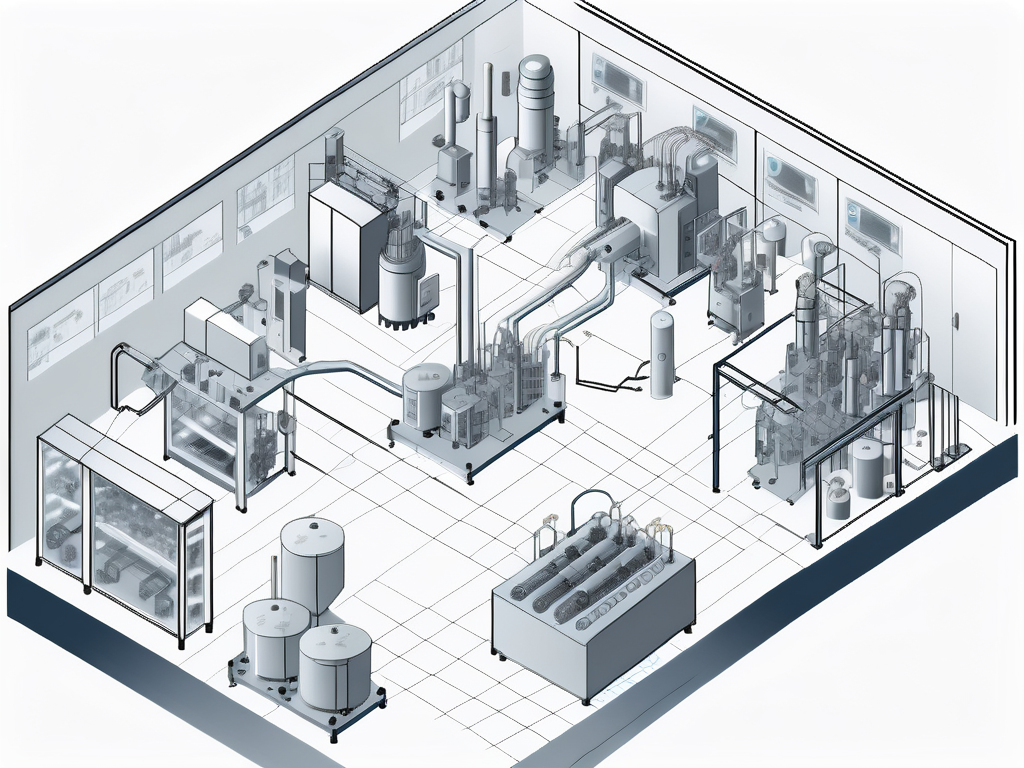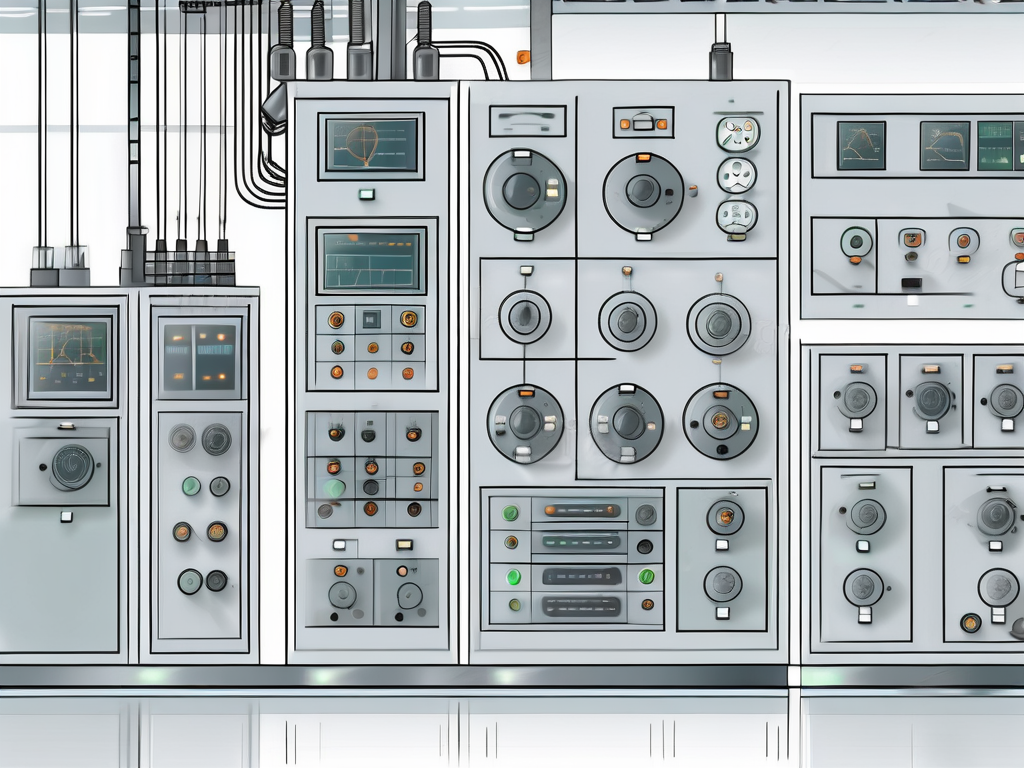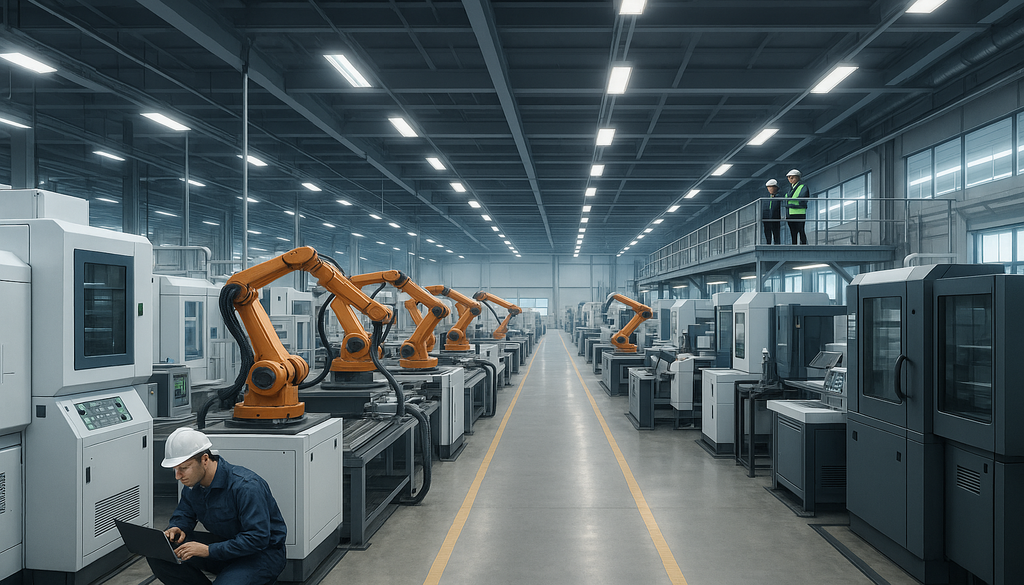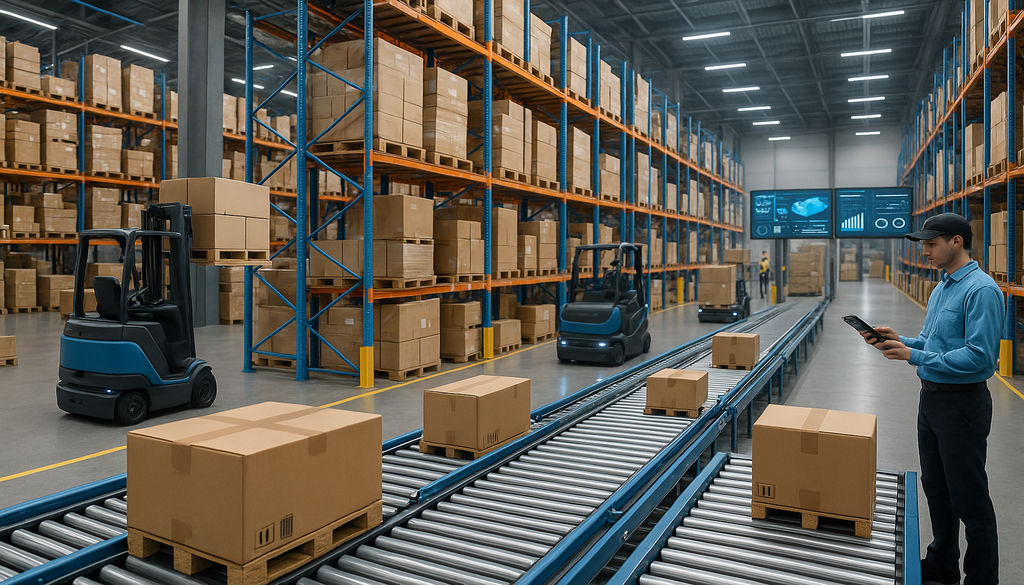Shop floor control is a crucial aspect of manufacturing that plays a significant role in optimizing production processes and ensuring efficient operations. In this article, we will delve into the key concepts of shop floor control, exploring its various components, the role of technology, challenges in implementation, and best practices for effective implementation. By the end, you will have a comprehensive understanding of shop floor control and its importance in manufacturing.
Introduction to Shop Floor Control
At its core, shop floor control is the process of managing and controlling activities that occur on the shop floor, where the actual manufacturing takes place. It involves overseeing and coordinating operations to ensure that production stays on track, meets customer demands, and maintains overall efficiency.
To achieve these goals, shop floor control relies on various strategies and tools that facilitate the coordination of tasks, the collection of real-time data, and the scheduling of production activities.
Defining Shop Floor Control
Shop floor control involves the implementation of systems and procedures to monitor and manage production processes. It encompasses activities such as tracking work orders, allocating resources, monitoring progress, and ensuring timely delivery of products.
Essentially, shop floor control serves as the link between the planning phase and actual production, providing the necessary control mechanisms to bridge the gap and ensure smooth operations.
Importance of Shop Floor Control in Manufacturing
Efficient shop floor control is crucial for manufacturing companies as it directly impacts productivity, cost-effectiveness, and customer satisfaction. By effectively managing the shop floor, manufacturers can optimize resource utilization, minimize waste, and improve overall operational efficiency.
Additionally, shop floor control enables manufacturers to respond quickly to changes in customer demands and adapt production schedules accordingly. This flexibility is essential in today’s fast-paced business environment, where customers expect timely delivery of customized products.
Furthermore, shop floor control plays a vital role in ensuring product quality. By closely monitoring production processes, manufacturers can identify and address any issues or deviations that may affect the quality of the final product. This proactive approach helps in maintaining high standards and reducing the risk of defective or substandard products reaching the market.
Moreover, shop floor control contributes to effective inventory management. By accurately tracking work orders and monitoring progress, manufacturers can optimize inventory levels and avoid overstocking or shortages. This not only reduces carrying costs but also ensures that the right materials are available at the right time, preventing production delays and customer dissatisfaction.
Components of Shop Floor Control
Several key components contribute to effective shop floor control:
Work Orders and Job Tickets
Work orders and job tickets serve as the foundation of shop floor control. They provide detailed instructions to operators, specifying tasks, timelines, and required resources. By effectively managing work orders, manufacturers can keep track of production progress and ensure that each task is completed on time.
Furthermore, work orders enable manufacturers to prioritize tasks, allocate resources efficiently, and monitor the overall flow of work on the shop floor.
For example, let’s say a manufacturing company receives a work order for a batch of 500 units. The job ticket will outline the specific tasks that need to be completed, such as assembling the product, conducting quality checks, and packaging the finished goods. By following the instructions provided in the work order, operators can ensure that each step is executed accurately and in the designated timeframe.
Real-Time Data Collection
Accurate and real-time data collection is essential for effective shop floor control. By collecting data on various aspects such as machine utilization, production rates, and quality parameters, manufacturers can gain insights into their operations and make data-driven decisions.
Real-time data collection allows manufacturers to identify bottlenecks, analyze production trends, and detect potential issues before they impact the overall production process. This proactive approach helps in improving efficiency, reducing downtime, and avoiding costly disruptions.
For instance, imagine a manufacturing facility that utilizes sensors to collect real-time data on machine performance. By monitoring the data, the shop floor control team can identify any anomalies or deviations from the expected production rates. This enables them to take immediate corrective actions, such as adjusting machine settings or conducting maintenance, to prevent any further delays or quality issues.
Production Scheduling
Efficient production scheduling is a critical component of shop floor control. It involves creating a well-structured plan that optimizes the utilization of resources, reduces idle time, and ensures smooth workflow.
Through effective scheduling, manufacturers can balance workload, allocate resources appropriately, and prioritize critical tasks. This helps in maintaining a steady production flow and meeting customer demands in a timely manner.
For example, let’s consider a scenario where a manufacturing company receives multiple orders with varying delivery dates. By utilizing production scheduling techniques, such as the use of Gantt charts or advanced planning software, the shop floor control team can create a production schedule that takes into account the order deadlines, available resources, and production capacities. This ensures that each order is processed efficiently and delivered to the customers on time.
The Role of Technology in Shop Floor Control
Technology plays a significant role in enabling effective shop floor control:
Automation and Shop Floor Control
Automation technologies such as robotics, machine learning, and artificial intelligence have revolutionized shop floor control. These technologies automate repetitive tasks, enhance process efficiency, and improve overall productivity.
By implementing automation solutions, manufacturers can streamline operations, reduce errors, and increase throughput. Automation also frees up human resources to focus on more complex tasks that require critical thinking and problem-solving skills.
Moreover, the integration of automation in shop floor control leads to a safer working environment. Robots and machines can handle hazardous materials or perform dangerous tasks, minimizing the risk of workplace accidents and ensuring the well-being of employees. This not only improves operational efficiency but also enhances employee satisfaction and morale.
The Impact of IoT on Shop Floor Control
The Internet of Things (IoT) has transformed shop floor control by enabling connectivity and communication between machines, systems, and devices. IoT sensors collect data in real-time, providing valuable insights into machine performance, energy consumption, and product quality.
IoT-driven shop floor control allows manufacturers to monitor equipment health, detect anomalies, and optimize maintenance schedules. This results in increased equipment uptime, reduced maintenance costs, and enhanced overall efficiency.
Furthermore, the utilization of IoT in shop floor control opens up opportunities for predictive maintenance. By analyzing data collected from IoT sensors, manufacturers can predict when equipment is likely to fail and proactively schedule maintenance to prevent costly downtime. This predictive approach not only saves time and money but also extends the lifespan of machinery, leading to long-term cost savings for the organization.
Challenges in Implementing Shop Floor Control
Implementing shop floor control can pose certain challenges:
Overcoming Resistance to Change
Introducing new systems and processes often faces resistance from employees accustomed to established practices. Overcoming this resistance requires effective change management strategies involving training, clear communication, and involvement of key stakeholders.
Engaging employees in the implementation process and highlighting the benefits of shop floor control can mitigate resistance and foster a culture of continuous improvement.
Furthermore, it is important for management to address the underlying reasons for resistance, which can range from fear of job loss to concerns about increased workload. By addressing these concerns transparently and involving employees in decision-making, organizations can build trust and facilitate smoother transitions.
Ensuring Data Accuracy
Accurate data is crucial for effective shop floor control. However, data integrity can be compromised due to factors such as manual data entry errors or outdated systems.
To address this challenge, implementing automated data collection mechanisms and ensuring data validation processes can help in maintaining data accuracy. Regular data audits and system upgrades are also essential to keep data quality at an optimum level.
Moreover, fostering a data-driven culture within the organization can encourage employees to prioritize data accuracy and take ownership of the information they input. Providing training on data management best practices and offering incentives for maintaining high data quality standards can further enhance the reliability of shop floor control systems.
Best Practices for Effective Shop Floor Control
To optimize the implementation of shop floor control, consider the following best practices:
Continuous Improvement and Shop Floor Control
Adopting a culture of continuous improvement is essential for effective shop floor control. Encouraging employees to identify and implement process improvements, leveraging data analytics to identify bottlenecks, and regularly reviewing and optimizing production schedules can lead to sustained operational excellence.
Training and Skill Development for Shop Floor Control
Providing comprehensive training and skill development programs for shop floor operators and supervisors is vital. These programs should focus on equipping employees with the necessary knowledge and skills to leverage shop floor control tools effectively.
Investing in employee development enhances their ability to adapt to new technologies, communicate effectively, and contribute to the overall success of the shop floor control implementation.
When it comes to continuous improvement, it’s crucial to involve shop floor employees at all levels. By fostering a culture where every team member feels empowered to suggest and implement improvements, organizations can tap into a wealth of frontline knowledge and experience. This bottom-up approach not only leads to more innovative solutions but also boosts employee morale and engagement.
Furthermore, leveraging data analytics in shop floor control goes beyond just identifying bottlenecks. By analyzing production data in real-time, manufacturers can predict maintenance needs, optimize inventory levels, and even forecast demand more accurately. This data-driven approach not only streamlines operations but also provides valuable insights for strategic decision-making.
Embracing Technology in Shop Floor Control
Technology plays a pivotal role in modern shop floor control. From IoT-enabled devices that provide real-time production data to advanced ERP systems that integrate shop floor operations with business processes, embracing technology is key to staying competitive in today’s manufacturing landscape.
By investing in cutting-edge technologies and ensuring seamless integration with existing systems, manufacturers can achieve greater visibility, efficiency, and agility in shop floor control. Moreover, continuous monitoring and upgrading of technology infrastructure are essential to keep pace with evolving industry trends and customer demands.
In conclusion, understanding shop floor control is essential for manufacturers looking to optimize production processes, improve efficiency, and meet customer demands. By leveraging the components of shop floor control, embracing technological advancements, overcoming implementation challenges, and following best practices, manufacturers can unlock the potential for continuous improvement and organizational success.


